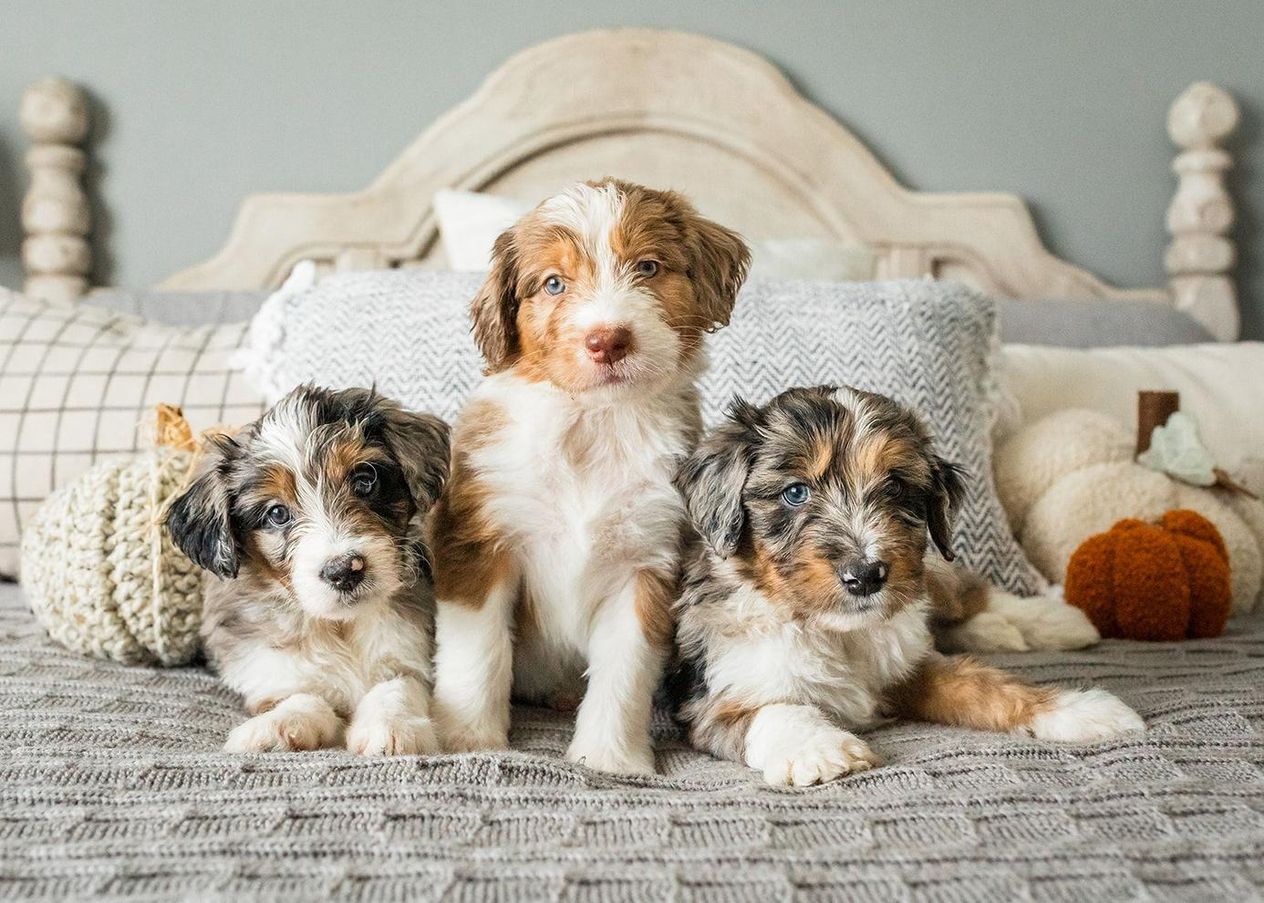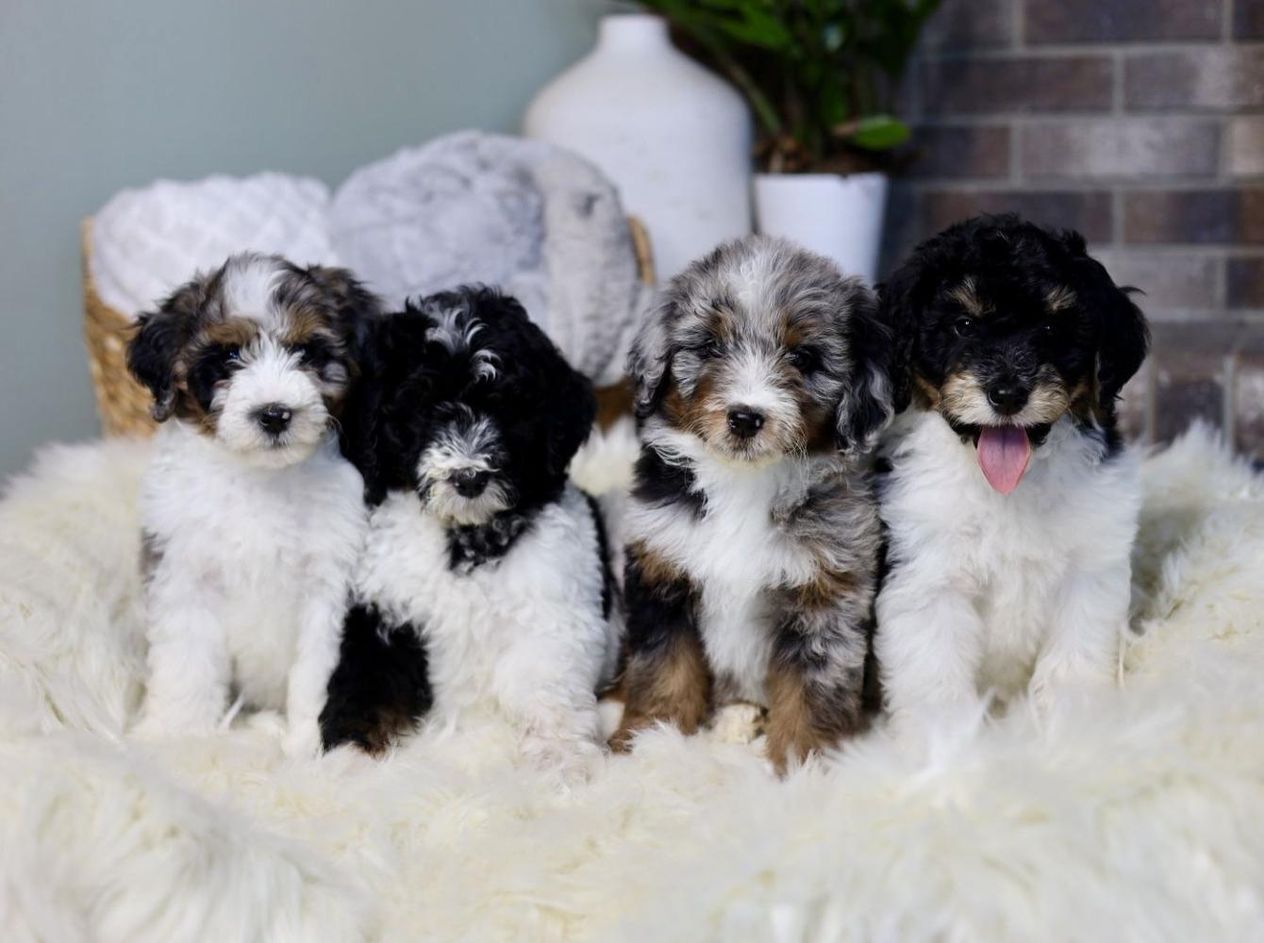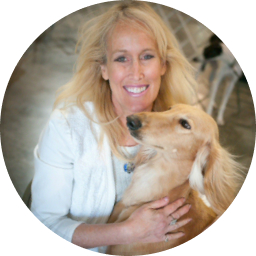Get to know
Aussiedoodles

One of the more popular Doodles (Poodle mixes), Aussiedoodles combine two fun-loving and biddable breeds to make a great but sometimes very active companion.
Browse available puppies
Connect with reputable breeders to find the dog of your dreams
At a glance
Very High Energy
Energy level
5/5
High Maintenance
Grooming
5/5
25 to 75 pounds
Size
Energetic, biddable, affectionate
Temperament
12-15 years
Lifespan
Highly Trainable
Training
5/5
Vocal
Barking
4/5
At a glance
Energy level
Very High Energy
Grooming
High Maintenance
Size
25 to 75 pounds
Temperament
Energetic, biddable, affectionate
Lifespan
12-15 years
Training
Highly Trainable
Barking
Vocal
Why people love the breed
People love their Doodles, and Aussiedoodles are one of the most popular–and best–Doodles.
Appearance
The Aussiedoodle resembles most Doodle crosses, and is a moderate dog covered with curly Poodle coat.
Grooming
Grooming the Aussiedoodle can be challenging.
King Family Ranch
Breed temperament and characteristics
Both parent breeds are known to be energetic and willing to please, and Aussiedoodles are no different.
Exercise
This active dog is always up for an adventure. But it can also calm down.
King Family Ranch
Training
Both Poodles and Australian Shepherds are well-known for being high achievers when it comes to training feats.
Diet and nutrition
Aussiedoodles tend to need a high-calorie food because of their high activity level.
King Family Ranch
Health issues
Larger Aussiedoodes may be prone to hip dysplasia, elbow dysplasia, or bloat (gastric dilatation volvulus).
Lifespan: 12 to 15 years.
Cushing’s disease
Cushing’s disease occurs in both Australian Shepherds and Poodles, and can affect Aussiedoodles. It occurs when the body produces too much of the hormone cortisol, causing a host of problems that must be treated medically or surgically.
Glaucoma
Glaucoma, in which the pressure within the eye builds up, is reported to be more common in Aussiedoodles.
Various Poodle conditions
Backcrosses to Poodles make the progeny subject to several Poodle conditions including sebaceous adenitis as well as several eye problems. In general an F2 cross or a backcross to either side does away with any health advantages the initial F1 cross may have had.
Double merle
Double merles, which can occur with an F2 breeding, or a backcross to the Aussie parent side, occur when a puppy inherits a dominant merle gene from each parent. A dog with two merle genes is called a double merle, and is susceptible to ear and eye anomalies. Merles should never be bred to one another. Australian Shepherds have a dominant gene that causes sensitivity to several drugs. Aussiedoodles can have this same sensitivity. It’s a good idea to have your Aussiedoodle checked so you know if it should avoid some drugs.
History
Poodle crosses are nothing new, starting with the popular Cockapoo and Pekepoos that originated in the 1950s.
About the author
Canine specialist, Caroline Coile, Ph.D., is the author of 34 dog books, including the top-selling Barron's Encyclopedia of Dog Breeds. She’s written thousands of magazine and web articles about dogs. She specializes in canine science, health, breeds and competitions. Caroline has won 20 national dog-writing awards, and was a 2015 Inductee into the Dog Writers Association of America Hall of Fame.
Breed Scorecard
Characteristics and temperament
Affectionate with family
4
Watchdog level
4
Playfulness
5
Adaptability
4
Social needs
5
Temperament
Energetic, biddable, affectionate
Intelligence
5
Good with other dogs
3
Good with cats or other pets
4
Friendly with strangers
3
Good as a service dog
5
Good for apartments
1
Barking level
4
Appearance
Height
14-23"
Size
25 to 75 pounds
Colors
Brown and white, Apricot, Sable, Blue merle, Red merle, Black phantom, Black and white, Black tri-color, Red phantom, Red tri-color
Coat texture
Coarse
Coat length
Long
Training
Trainability
5
Exercise
Exercise needs
5
Exercise time
1 to 2 hours daily
Mental exercise needs
5
Favorite activities
Agility, retrieving, tricks, herding
Grooming
Grooming needs
5
Brushing frequency
Daily
Needs professional grooming?
Yes
Drooling level
2
Health issues
Cushing’s disease
Glaucoma
Various Poodle conditions
Double merle
Other
Bred for
Companionship
Country of origin
United States
Popularity level
3
FAQs
On Good Dog, you can search for Aussiedoodle puppies or dogs in rescues and shelters. Adopting an Aussiedoodle from a shelter or rescue is generally less expensive than buying a puppy from a breeder with ethical practices. Across the United States, there are dedicated rescues that specialize in specific breeds and may even help transport an Aussiedoodle dog to you from another part of the country. Although it can be more cost-effective, adopting the exact breed you're looking for is typically more difficult than working with a responsible breeder. Learn more about adopting a dog from a shelter or rescue.
Yes. They are a bit rambunctious, but given sufficient exercise, they can be calm and well-mannered inside.
It depends on how big the parents were. Those with a Standard Poodle parent can be as big as a chunky Standard Poodle. Those with a Toy Poodle parent can be as small as a Miniature Poodle. There's one more possibility; some can have a Miniature American Shepherd (formerly known as a Miniature Australian Shepherd) parent, in which case when bred to a Toy Poodle would be almost as small as a Toy Poodle.
It varies from dog to dog. Some do, and some don’t.



